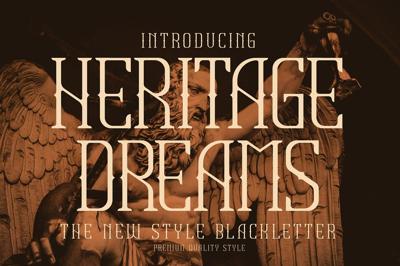Impact of fonts on branding
Impact of Fonts on Branding: How Typography Shapes Consumer Perception and Brand Success
Typography is far more than just letters on a page—it's a powerful psychological tool that can make or break a brand's success. The fonts you choose communicate your brand's personality, values, and positioning before customers even read your content. Research shows that consumers form judgments about brands within milliseconds, and typography plays a crucial role in these split-second decisions. Understanding the profound impact of fonts on branding is essential for any business seeking to build strong customer relationships and achieve lasting market success.
The Psychology Behind Font Perception
Human brains process visual information at lightning speed, making instant associations between typefaces and personality traits. This phenomenon, known as typography psychology, reveals that different font styles trigger specific emotional and cognitive responses. These responses are often unconscious but powerfully influence consumer behavior and brand perception.
Serif fonts, with their traditional flourishes and classical origins, immediately suggest trustworthiness, authority, and established credibility. Financial institutions, law firms, and academic organizations leverage these psychological associations to reinforce their expertise and reliability. The brain interprets serif fonts as signals of tradition and permanence, making them ideal for brands seeking to convey stability and heritage.
Sans-serif fonts communicate modernity, simplicity, and forward-thinking approaches. Technology companies and startups often choose clean, minimalist typefaces to suggest innovation and efficiency. The absence of decorative elements creates associations with cutting-edge thinking and streamlined solutions, appealing to consumers who value progress and simplicity.
Script and handwritten fonts trigger emotional responses related to personal connection and authenticity. These typefaces suggest human craftsmanship and individual attention, making them popular choices for artisanal brands, personal services, and businesses emphasizing emotional connections with customers.
Font Choice and Brand Personality
Typography serves as a brand's voice in visual form, communicating personality traits that attract specific target audiences and differentiate brands from competitors. This communication happens instantaneously and influences every subsequent interaction between brand and customer.
Professional and Authoritative Brands benefit from fonts that suggest competence and reliability. Strong, well-proportioned typefaces with clean lines communicate expertise and trustworthiness. Legal services, healthcare providers, and financial institutions often choose fonts that reinforce their professional credibility and inspire confidence in their capabilities.
Creative and Innovative Brands require fonts that suggest originality and artistic vision. Unique typefaces with distinctive character help creative agencies, design studios, and innovative technology companies communicate their creative capabilities and forward-thinking approaches. These fonts often incorporate subtle design elements that demonstrate attention to detail and aesthetic sophistication.
Friendly and Approachable Brands utilize fonts with warm, welcoming characteristics. Rounded edges, moderate contrast, and human-like qualities help service businesses, retail brands, and community organizations appear accessible and customer-focused. These fonts reduce intimidation factors and encourage customer engagement.
Luxury and Premium Brands demand fonts that communicate exclusivity and superior quality. Elegant typefaces with refined proportions and sophisticated details help luxury brands justify premium pricing and attract affluent consumers seeking status and quality markers.
Impact on Brand Recognition and Memory
Typography significantly influences how easily customers recognize and remember brands across different touchpoints and contexts. Distinctive font choices create visual anchors that help brands stand out in crowded marketplaces and build lasting mental associations.
Consistency Across Touchpoints ensures that customers recognize your brand whether they encounter it on websites, business cards, packaging, or advertising materials. When typography remains consistent, it creates a unified brand experience that strengthens recognition and builds trust through familiarity.
Memorability Through Distinctiveness helps brands create lasting impressions through unique typographic choices. While avoiding extreme novelty that might seem unprofessional, slightly distinctive fonts can help brands become more memorable without sacrificing credibility or readability.
Association Building occurs when consistent font usage creates strong mental connections between typefaces and brand values. Over time, customers begin associating specific typographic styles with brand experiences, creating powerful recall triggers that influence purchasing decisions.
Emotional Connection and Customer Response
Typography directly influences emotional responses to brands, affecting customer satisfaction, loyalty, and purchasing behavior. These emotional connections often determine long-term brand success more than rational product features or pricing considerations.
Trust and Credibility develop through font choices that align with customer expectations and industry standards. Mismatched typography can create cognitive dissonance that undermines customer confidence, while appropriate font selection reinforces brand credibility and encourages customer engagement.
Comfort and Familiarity result from fonts that feel appropriate and accessible to target audiences. Typography that feels too formal might intimidate casual customers, while overly casual fonts might undermine professional credibility. Finding the right balance creates comfortable customer experiences that encourage continued engagement.
Excitement and Engagement can be generated through dynamic typography that captures attention and creates positive emotional responses. However, this must be balanced with readability and appropriateness to avoid overwhelming or alienating potential customers.
Cultural and Demographic Considerations
Font impact varies significantly across different cultural contexts and demographic groups, requiring careful consideration when developing brand typography strategies for diverse audiences.
Age Group Preferences influence typography effectiveness, with younger consumers often preferring modern, minimalist fonts while older demographics might respond better to traditional, established typefaces. Understanding these preferences helps brands communicate effectively with their target audiences.
Cultural Associations affect how different fonts are perceived across various cultural contexts. Typography that suggests luxury in Western markets might not translate effectively to Asian markets, where different aesthetic traditions influence perception and preference.
Industry Expectations create typographic norms that customers expect brands to follow or thoughtfully challenge. While innovation can create differentiation, dramatic departures from industry standards might confuse customers or undermine credibility.
Digital Age Typography Challenges
Modern branding faces unique typography challenges as brands must maintain consistent impact across increasingly diverse digital platforms and devices.
Multi-Platform Consistency requires fonts that maintain their character and readability across websites, mobile apps, social media, and traditional print materials. Technical limitations and platform-specific requirements can affect font rendering and impact brand consistency.
Screen Readability becomes crucial as more customer interactions occur through digital channels. Fonts must maintain their brand impact while providing excellent readability across different screen sizes, resolutions, and viewing conditions.
Loading Speed and Performance considerations affect font selection for web applications, where complex fonts might slow page loading and negatively impact user experience. Balancing visual impact with technical performance requires careful font optimization and selection.
Measuring Typography's Brand Impact
Understanding and measuring typography's effectiveness helps brands optimize their typographic choices and maximize brand impact.
Brand Recognition Studies can measure how effectively typography helps customers identify and remember brands across different contexts and time periods. These studies reveal which typographic elements contribute most significantly to brand recall and recognition.
Emotional Response Testing evaluates how different fonts affect customer emotions and attitudes toward brands. This research helps identify typography that creates desired emotional connections and avoids negative associations.
Conversion Rate Analysis examines how typography choices affect customer behavior, including website engagement, purchase decisions, and brand preference. This data-driven approach helps quantify typography's business impact.
Strategic Typography Implementation
Successful typography implementation requires systematic approaches that ensure consistent brand impact across all customer touchpoints.
Brand Guidelines Development establishes clear rules for typography usage, including font selection, sizing, spacing, and color applications. These guidelines ensure consistent implementation across different teams, vendors, and applications.
Hierarchy Systems create clear information organization that guides customer attention while reinforcing brand character. Effective typography hierarchies improve communication while strengthening brand recognition.
Adaptation Strategies prepare brands for various application requirements while maintaining core typographic identity. This includes plans for different languages, technical limitations, and emerging platforms.
Future Typography Trends
Emerging technologies and changing consumer preferences continue reshaping typography's role in branding.
Variable Fonts offer unprecedented flexibility for maintaining brand consistency while optimizing performance across different applications and contexts. This technology allows subtle adjustments that enhance brand impact without requiring multiple font files.
Accessibility Focus drives typography choices that serve broader audiences, including customers with visual impairments or reading difficulties. Inclusive typography demonstrates brand values while expanding market reach.
AI-Assisted Typography provides new tools for optimizing font selection and measuring impact, helping brands make data-driven decisions about typography that maximize brand effectiveness.
Conclusion
Typography's impact on branding extends far beyond aesthetic considerations, directly influencing customer perception, emotional connection, and business success. Effective font choices communicate brand personality, build recognition, and create emotional bonds that drive customer loyalty and preference.
Success requires understanding typography psychology, aligning font choices with brand strategy, and maintaining consistency across all customer touchpoints. As digital platforms continue evolving and consumer expectations shift, brands must adapt their typography strategies while preserving the core elements that drive brand recognition and customer connection.
The investment in strategic typography pays dividends through stronger brand differentiation, improved customer relationships, and enhanced business performance. In an increasingly crowded marketplace, typography remains one of the most powerful tools for creating lasting brand impact and driving sustainable business growth.





